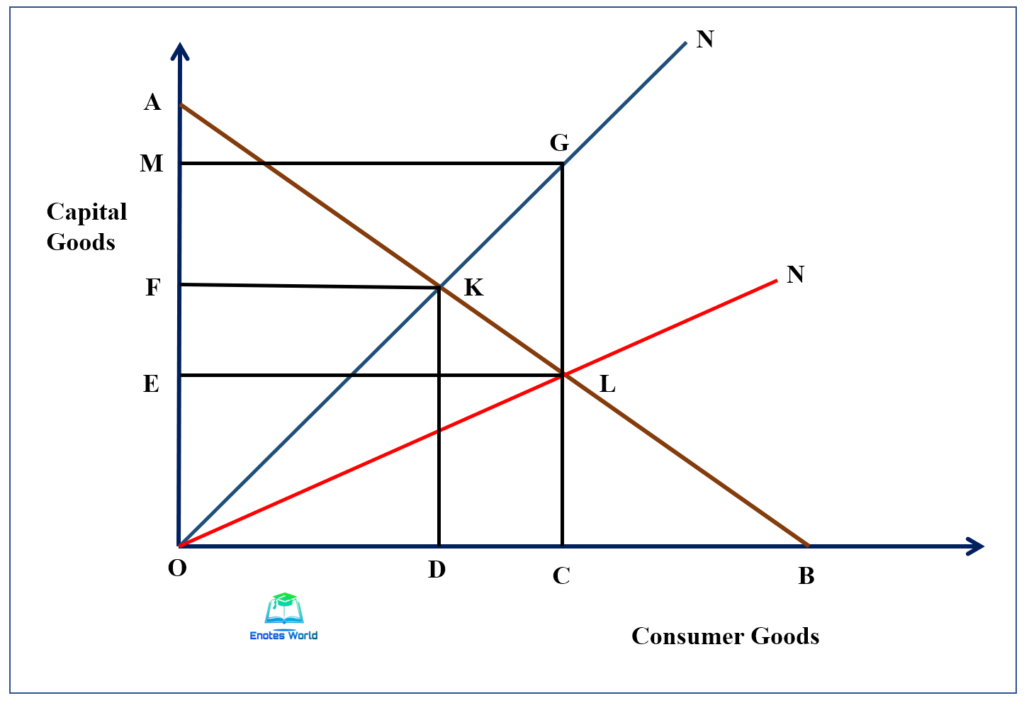Every economy needs to invest its scarce resources in the production of capital goods and consumer goods. Both sorts of goods have their relevance. Capital goods add the capital stock and raise the economy’s productive capacity. Investing in capital goods is essential to raise the long-term production potential. Only sufficient investment in capital goods can increase the community’s welfare in the long run. The growth-oriented investment of an economy does not yield an immediate return in terms of an increase in the production of goods and services. Therefore, a certain amount of resources or funds needs to be invested in the production of consumer goods and services. In a fully employed economy, if more resources are used to produce investment goods, fewer resources will be available to produce consumer goods (consumer goods are necessary to satisfy people’s immediate consumption needs).
The opportunity cost of producing investment goods or capital goods required for growth is the amount of reduction in the production of goods for current consumption and it will cause people’s current living standards to fall. However, after a certain time as new equipment comes into use, production per head will start to rise and the loss of consumer goods will eventually be made up. This process is explained with help of the following diagram.

As shown by the above figure, AB is the economy’s production possibility curve with the production of OC amount of consumer goods and OE amount of capital/investment goods represented by point L. Due to investment, the economy will grow and if the same proportion of resources is allocated to the production of consumer goods continuously, the economy will grow along the expansion path OH.
Assume that if the transformation curve or PPC remains unchanged and the economy decides to raise the growth rate by redirecting resources away from the production of consumer goods to the production of capital/investment goods. This is depicted by the movement of the economy from point L to point K along the same product possibilities curve AB.
Now, at point K, the production of investment goods increases by EF amount, and the production of consumer goods decreases by the amount of CD (Cost of economic growth). As a result, the production of investment goods rises at the cost of a fall in the production of consumer goods due to scarcity of resources. If the distribution of resources for the production of investment goods and consumer goods remains the same as shown by point K, the economy will follow the ON expansion or growth path. As a result of growth, the PPC is forced to shift outward and the economy reaches point G. Here at point G, people’s living standards are restored to their earlier position at point L. If the growth rate of the economy along the expansion path ON is greater than that of OH (it is due to more investment goods being produced along ON than OH), the PPC curve will shift outward faster.